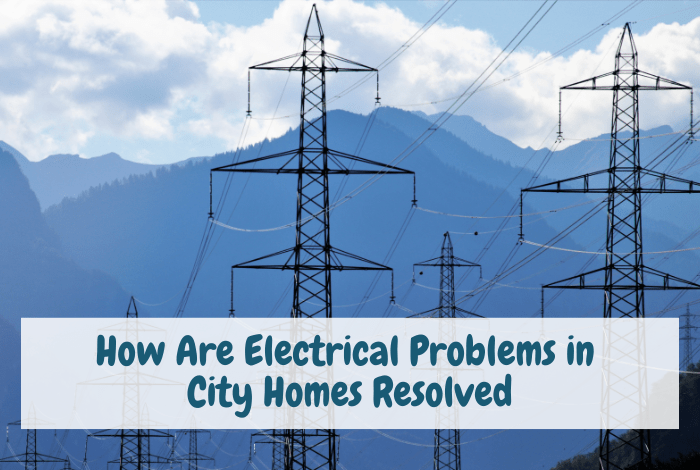Are you puzzled over electrical problems in your city home? This could be due to a variety of reasons – incorrect wiring, overloaded circuits, or faulty appliances.

Whatever the cause, it’s crucial to address these issues promptly to ensure safety and functionality.
Resolving such problems may require professional help. Electrical repairs necessitate a certain level of expertise; failing in which could lead to severe consequences.
It’s in these situations where expert entities like The Local Electrician prove invaluable. Don’t let these electrical predicaments daunt you; reach out to them for immediate assistance.
Identifying Common Electrical Issues
Understanding common electrical issues involves detecting live contacts or active circuits. Electrical tools are crucial for this.
Electrical Tools’ Role
They ensure precise measurements, safety, and functionality of electrical components, confirming if electricity is flowing.
Specialized Electrical Tools
Key tools include non-contact voltage testers, continuity testers, multimeters, pliers, screwdrivers, compressed air machines, and cleaning solutions.
Resolving Common Issues with Tools
These tools tackle problems like short circuits, faulty outlets, and tripped breakers, helping homeowners fix issues safely.
Importance of Circuit Cleanliness
Maintaining clean circuits prevents blockage of electrical contacts, ensuring safety and reliability.
Electricity Flow
Electricity requires a continuous path; any blockage stops current flow, much like traffic congestion halts vehicles.
Hot and Flickering Outlets
Flickering lights often signal loose connections, potentially causing circuit failure.
Checking Connections
Inspect receptacles, switches, and panels for loose or ‘backstabbed’ connections. Examine light fixture splices for damage or overheating.
Grounding Defects
Flickering may indicate grounding issues. Inspect the main panel grounding and ensure coaxial cables aren’t improperly grounded.
Damaged Circuit Components
Component damage, such as power surges melting cables, can cause flickering and noise.
Bad Connections
Faulty main breakers or loose connections before or after the meter can be culprits. Check both load and line side connections.
Dealing with Aluminum Wiring
Homes with aluminum wiring (1965-1972) face fire risks, primarily at connections due to oxidation and contraction.
Safety measures include using CO/ALR fixtures and having a licensed electrician attach copper pigtails with special connectors like COPALUM or AlumiConn.
Regular inspections are vital. DIY attempts may not comply with laws and can be dangerous. Insurance may require safety upgrades. Before purchasing such homes, have a certified electrician assess the wiring.
Addressing Burning Smells
If you detect a burning smell, prioritize safety: turn off the circuit at the breaker, unplug devices if safe, and check for sparks or damage. Avoid inhaling smoke.
| Cause | Description | Possible Solution |
| Exposed Wiring | Power surges causing burning smell | Contact an electrician |
| Overloaded Circuits | Breaker tripping, outlet burning | Unplug devices, call electrician |
| Faulty Appliances | Dirt causing friction or short-circuiting | Service or replace appliance |
| Malfunctioning Components | Sparking outlets, end of lifespan | Repair or replace by electrician |
GFCI outlets are essential in wet areas like kitchens and bathrooms. Don’t ignore burning smells; act swiftly for safety.
Fixing Ungrounded Connections
Ungrounded connections pose electrocution risks. Use a tester to identify them.
Solutions include:
- Grounding the Outlet: Connect to the grounding system via the metal outlet box.
- Replace with GFCI Outlet: Provides protection; label as “No Equipment Ground”.
- Add GFCI Protection: Install at the breaker panel or between panel and outlet; label appropriately.
- Return to 2-Prong Outlets: Less preferred due to lack of surge protection.
Using 3-prong adapters on 2-prong outlets is unsafe and often illegal. The NEC requires grounding in new installations. Professional assistance ensures code compliance.
Resolving Loose Outlet Problems
Loose outlets are a safety risk but can be fixed DIY.
Tools and Materials
You’ll need screwdrivers, a voltage tester, an outlet tester, electrical box extenders, and outlet spacers.
Fixing the Outlet
If the box is less than 1/4 inch recessed, use spacers to align the outlet with the wall. Reattach the receptacle securely.
Testing
Restore power and test the outlet with a tester. When in doubt, contact a professional electrician.
Combating Rodent-Induced Damage
Rodents can damage wiring. Inspect panels and wires, especially behind meter bases.
Steps to combat damage:
- Inspect low-voltage wiring: Rodents target Cat5, security, doorbell, thermostat wires.
- Secure loose wires: Use anchors to prevent further damage.
- Seal entry points: Use foam or steel wool to block holes.
- Contact professional help: For major damage, involve a licensed electrician.
Regular inspections and sealing openings enhance home defenses. Always turn off power before repairs.
Implementing Safety Precautions
Teaching children about electrical dangers is vital. Explain equipment like power lines and instill safety rules:
- Don’t climb trees near power lines: Electricity can travel down branches.
- Fly kites in open areas: Avoid power lines when using drones or model planes.
- Avoid utility poles and towers: High voltage is deadly.
- Stay away from electrical equipment: Substations and devices have high voltage.
Install playground equipment and pools away from power lines. Before digging, have utilities mark buried lines. Use GFCIs in wet areas to prevent shocks. Teach kids not to use appliances near water.
Your Final Takeaway
Understanding and resolving electrical issues in your city home can certainly be complex. Ensure safety first, utilize basic diagnostic tools, and seek professional assistance when needed. Don’t hesitate to reach out to experienced professionals like those at The Local Electrician when in doubt.
I hope that helps!
Don’t miss out on future posts like this – receive updates directly to your inbox by email by adding your email address here and hitting subscribe. You can also follow me on Twitter or BlogLovin and I’d love to see you over on my Facebook page and on Instagram. If you’re interested, you can find out more about me here and while I’ve got your attention, if you’re wondering why some of my posts lately are a little bit less frugal then have a read of this post. 😉 This is a sponsored post.


